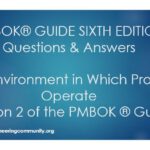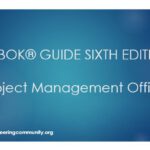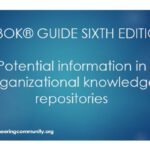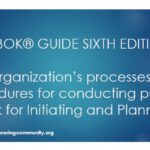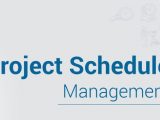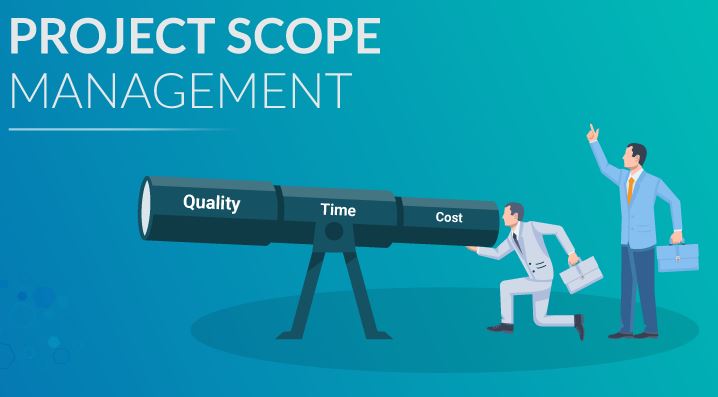
Project Scope Management Summary 6th Edition
27 June 2020
Project Scope Management Summary 6th Edition
- Project Scope is measured against the Project Management Plan. Product Scope is measured against the Product Requirements.
- Business Analysis are used in some organizations to defining, managing, and controlling requirements activities. The relationship between a project manager and a business analyst should be a collaborative partnership.
- Scope Management Plan that describes how the scope will be defined, developed, monitored, controlled, and validated. Components includes processes that help (Preparing project scope statement, create WBS, how the baseline will be approved and maintained and how formal acceptance will be obtained).
- Requirements Management Plan (Business Analysis Plan) is a component of the project management plan that describes how project and product requirements will be analyzed, documented, and managed. Components may include (Configuration management activities, Requirements prioritization, Metrics, Traceability structure and how requirements will be planned, tracked and reported).
- Configuration management shows how changes will be initiated, how impacts will be analyzed, how they will be traced and reported and authorization levels to approve changes.
- D.G:
✓ Brainstorming: used to generate and collect multiple ideas related to project.
✓ Interviews: are useful for obtaining confidential information.
✓ Focus Groups: (Interactive Discussion) Bring together prequalified stakeholders and subject matter experts to learn about their expectations and attitudes about proposed product/service. Need trained moderator.
✓ Questionnaires: designed to get quickly information of large number of respondents.
✓ Benchmarking: to generate ideas for improvement and new practices. Compare actual & planned.
- Decision making:
✓ Voting: Used to classify and prioritize product requirements. (unanimity, majority and plurality).
✓ Autocratic decision making: one individual takes responsibility for making the decision.
✓ Multicriteria decision analysis: decision matrix to provide a systematic analytical approach for establishing criteria to evaluate and rank many ideas.
- Data Presentation:
✓ Affinity diagrams: allow large numbers of ideas to be classified into groups for review and analysis.
✓ Mind mapping: Ideas created through individual brainstorming sessions to generate new ideas.
- Interpersonal and Team Skills:
✓ Nominal group technique: Enhances brainstorming with a voting process used to rank the most useful ideas for prioritization. (Generate & prioritize).
✓ Observation and conversation (Job Shadowing): To cover hidden requirement.
✓ Facilitation: bring key stakeholders together to define product requirements. Workshops can be used to quickly define cross-functional requirements.
- Context Diagram: Example of Scope model. Context diagrams visually depict the product scope by showing a business system and how people and other systems (actors) interact with it.
- Prototypes: Method of obtaining early feedback. Examples (computer generated 2D, 3D models, mock-ups and simulations). Storyboarding is a prototyping technique showing sequence or navigation through a series of images. (Risk Mitigation).
- Requirements should be unambiguous & can be classified into: Business, Stakeholder, Solution, Transition and readiness, Project & Quality requirements.
- Requirements Traceability Matrix:
✓ Grid that links requirements to the deliverables that satisfy them.
✓ Ensure that each requirement adds business value.
✓ Provides a structure for managing changes to the product scope.
- Product Analysis: Used to define products and services. Requirements are captured at a high level and decomposed to the level of detail needed to design the final product.
- Project Scope Statement:
✓ Project Scope Statement include (Product scope description + deliverables + acceptance criteria + project exclusions).
✓ Project charter contains high level information while project scope statement includes detailed description of the scope components. They are progressively elaborated throughout the project.
- Decomposition: Technique used for dividing and subdividing the project scope and project deliverables into smaller, more manageable parts. Popular methods to create WBS structure: top-down approach. Agile approaches decompose epics to user stories.
- Decomposition may not be possible for a deliverable or subcomponent that will be accomplished far into the future the project team usually waits until the deliverable or subcomponent is agreed on, so the details of the WBS can be developed. This technique called rolling wave planning.
- The total of the work at the lowest levels should roll up to the higher levels so that nothing is left out and no extra work is performed. This is sometimes called the 100 percent rule.
- Scope baseline includes:
✓ Project scope statement: description of the project scope, major deliverables and constraint.
✓ WBS: Hierarchical decomposition of the total scope of work to be carried out by the project team to accomplish the project objectives and create the required deliverables.
❖ Work package: The lowest level of the WBS is work package with a unique identifier. Each work package is part of a control account which is a management control point where scope, budget, and schedule are integrated and compared to the earned value for performance measurement. Each control account has two or more work packages. But work package is associated with a single control account.
❖ Planning package: Include one or more planning packages. A planning package is a WBS component below the control account and above the work package with known work content but without detailed schedule activities
✓ WBS dictionary: document that provides detailed deliverable, activity, and scheduling information about each component in the WBS. It’s a document that support the WBS because you can’t include all the information in the WBS.
- Validate Scope concerned with acceptance of the deliverables. Control Quality concerned with correctness of the deliverables. The verified deliverables obtained from the Control Quality process.
- Inspection: Includes activities such as measuring, examining, and validating to determine whether work/deliverables meet requirements and product acceptance criteria. They might be called reviews and walkthroughs.
- Verified deliverables Validate Scope Accepted Deliverables.
- The uncontrolled expansion to product or project scope without adjustments to time, cost, and resources is referred to as scope creep.
- Performance measurement baseline (PMB): When using earned value analysis, the performance measurement baseline is compared to actual results to determine if a change, corrective action, or preventive action is necessary.
- Variance analysis: compare the baseline to the actual results and determine if the variance is within the threshold amount.
Trend analysis: examines project performance over time to determine if performance is improving or deteriorating.


